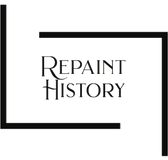Mary Beale
One of the first professional female painters in England, Mary Beale received 83 portrait commissions in one year at the peak of her career. With access to some of England’s most prominent clergymen and aristocrats, Mary enjoyed great success as a portraitist. At a time when education for women was controversial, Mary was the breadwinner of her family. Unheard of at the time, her husband worked as her assistant.

Born Mary Cradock in March of 1633, Mary Beale was the daughter of a Suffolk clergyman. As well as leading the congregation of St Paul’s Church in Barrow, Suffolk, John Cradock, was an amateur painter. Historians assume that Mary grew to love painting and learned basic techniques from her father. But Mary lived close to the town of Bury St Edmunds, where a group of painters including Peter Lely and Matthew Snelling worked. It's possible that contact with these painters inspired Mary to become an artist.
When Mary was ten years old her mother died. Mary’s mother had recently given birth and Mary and her baby brother were raised by her father. Before Mary had reached the age of eighteen she met her future husband, Charles Beale. Charles was a cloth merchant and an amateur painter who encouraged Mary to paint professionally. Mary and Charles were married on the 8th of March 1651 or 1652. Mary’s father died shortly after the wedding and the newlyweds moved to Walton-on-Thames.

Mary had three sons in six years. Bartholomew, born in 1654 did not survive but a second son named Bartholomew was born in 1655 and a third son, Charles, in 1660. Mary painted throughout the early years of her marriage and her pregnancies. At first, Mary painted portraits as favours for acquaintances, usually accepting small gifts in return. To improve her technique, Mary copied the work of Peter Lely who had succeeded Anthony van Dyck to become court painter for Charles II, King of England. Lely invited Mary to observe him as he worked in his studio. It was a rare privilege to be invited into the studio of a court painter and Lely's friendship boosted Mary’s career.

From her home in Covent Garden, Mary worked as a semi-professional artist. Sometimes she accepted gifts in exchange for portraits and sometimes she demanded a fee. But Charles recognized the uniqueness of Mary’s ability and kept meticulous records related to Mary’s career. In more than thirty notebooks, Charles recorded financial details, praise from clients and the materials Mary used in her work. Charles also prepared Mary’s canvases and paints and made sure all her supplies were up to scratch.
It wasn’t until the 1670s that Mary’s career really took off but once it did her success was astronomical. Mary benefited from a circle of esteemed friends that included nobility and high-ranking members of the church. A few notable people who sat for Mary in the 1670s include Queen Henrietta Maria and John Tillotson, who became the Archbishop of Canterbury.

Mary’s fees were low but she worked constantly and made enough money to support her family and have enough left over to give to charity. Through the 1670s, Mary’s courtly style of portraiture attracted a steady roster of clients. The peak of Mary’s success came in 1677 when Mary won a total of 83 commissions. Even though she charged a relatively nominal fee, this volume of work ensured the Beale family were well taken care of.
Mary trained other young female painters at her studio. By the 1680s, Mary’s commissions were diminishing. Mary’s chosen style of portraiture, heavily influenced by the courtly work of Lely, was becoming unpopular. By tutoring, Mary could supplement her income and pass on her skills and contacts to artists at the start of their careers. Two of young women Mary tutored were Keaty Trioche and Sarah Curtis. Mary worked less and less up to her death on the 8th of October 1699. Mary was buried under the communion table of St James’s Church in Piccadilly.
The surviving paintings of Mary Beale have inspired praise and criticism. At the time of painting, Mary’s work was often described as masculine (which was a form of praise) and in possession of an Italian air and style. Others have accused Mary of copying Lely’s style too closely and criticized Mary’s technical skill.

What cannot be criticized is Mary’s tenacity. Working as an artist to support her family in an intensely patriarchal society, Mary challenged the status quo. With paintbrush in hand, Mary opened a door for the next generation of female painters to walk through.

